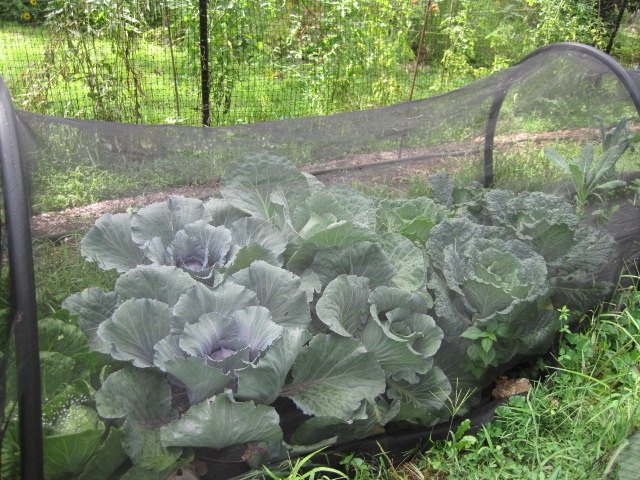
Get to Know (and Prevent) this Common Garden Pest
Become a better gardener! Discover our new Almanac Garden Planner features for 2024. It’s easy, fun, and free to try!
ADVERTISEMENT
We've used several pairs of the decoy mods my wife made, he usually cutting them from some fairly robust plastic and mounting them on bent metal coat hanger wires. We've done this for about 10 years, and we have watched butterflies fly in among the food and then turn and fly out apparently when they spotted the decoys. It's almost comical to watch but it certainly is a relief. The decoys usually, if marked with a good enough ink last four to five years and don't need to be moved around unless you actually move your brassicas around. Generally it looks like the decoys are probably an effective guard over 10 to 12 by 15 or so foot patches. You'd have to experiment with it to figure out how much space a pair of decoys would work for. But they certainly do seem to work well.
Trying to purchase the screen cloth mentioned in the article. I am not sure I am finding the right stuff. Is is a shade cloth? Wouldn't that block too much sun? I'm in SE MI.
The material is known as “Reemay” (a brand name), which is a thin polyester fabric. It lets in light but keeps out pests! You should be able to find it for sale online.
Just thought I'd share my experience.......last year, I laboriously made realistic looking decoys, put about 12 in a small patch, didn't work.
This year I made strings of very simple decoys as follows - and it's WORKING!!
I used thin fishing line, opaque white shopping bags cut into rectangles roughly 7 cm x 5 cm or 2" x 2 3/4". Cut off about 3M of line, find the middle, tie a slipknot, pinch/scrunch the rectangle in the middle of the long side, put it through the slipknot and secure with another knot, spacing each butterfly about 15- 18 cm or 6-7" apart, continue till you've reached the end and then do the other side of the fishing line. The shorter lengths are easier to pull through when making the second knot and I just tied each run of fishing line together when installing it.
I strung these up all around the outside of the brassica bed and crisscrossed them over the beds using stick/stakes. I used about 50 butterflies per square meter.
The cabbage moths are checking out the bed and then flying off WITHOUT LANDING WOO HOO!! I think because I used so many they are seeing the patch as already having too much competition. I've been observing this for over a week - and they are definitely avoiding that bed!
Cheap, easy and I hope this helps someone else! Cheers
Very interesting! Thank you for sharing your experience! We hope it continues to work!
We tried making the moth decoys to protect our kale and brussel sprouts and did as the linked article suggested. Maybe it works for some people but it just seemed to attract the moth even more. We live in northern Illinois.
What is the yellow flower with the cabbage butterfly at the heading of this article? Is it an attractant for cabbage butterflies? or a repellent?
It looks like calendula to me, which attracts all sorts of insects and butterflies.
Robin
Thank you for this article! I, too, have bunches of white moths in the spring, and they love my green bean leaves! Last year, in one of my gardening groups, someone mentioned hanging a white plastic moth (with the black spots) in the garden. I used them last year and this year. You can actually see a time line on the green bean leaves this year where I hung my moths, as that's when they quit eating holes in the leaves. Everything under that is chewed up!
Thanks again for this article. I always read gardening articles, as it just reinforces what I already know, or I learn something new! :-)
Deb Jackson
Holland, MO
I am glad that worked for you! Thanks for letting us know!














